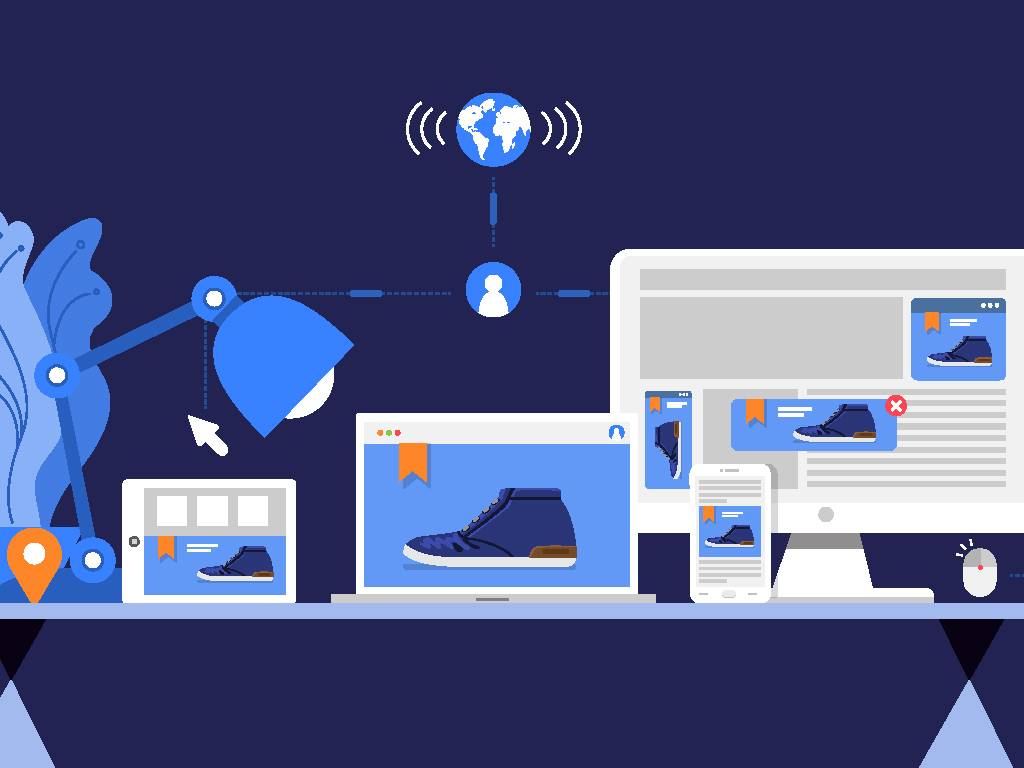What is Retargeting Marketing?
Did you know that 97% of your website’s first-time visitors leave (without purchasing!) to never return? I know, that’s a huge number.
The reason for that is they want to get to know you first before purchasing. However, in the process of getting to know you, they could get distracted and end up just leaving to never come back.
Let’s say they were looking for Christmas lights and they end up on your website. Then as they are looking around, they get a phone call from work. They close your website.
There’s a good chance that is your last time to see them.
Did you know that there is a way to bring them back? In this blog post, you will learn all about retargeting marketing.
What is retargeting marketing?
Retargeting marketing—or simply, retargeting—is the practice of using personalized ads to remind your past visitors to return to your website and check out your products and services or to complete their purchase.
According to LinkedIn, only 2% of visitors convert on their first visit to a website. By retargeting those who visited your website then left without purchasing, you entice them into coming back to your website and convert.
For example, let’s say the person looking for Christmas lights earlier (let’s call them Alex) got a phone call from work and closed your website. If your company invests on retargeting marketing, they would be seeing ads of those Christmas lights even on other websites. That means they get to be more familiar with the brand and product of your company until they decide to check out your website again and eventually make a purchase.
Thing is, 49% of consumers need to visit your website 2-4 times before purchasing anything from you. So if they aren’t coming back after that initial visit, how will they make that purchase?
How effective is it? A 2018 statistic says that leads who see your retargeted ads are 70% more likely to convert. And not just that, but those who abandon their carts are also more likely to come back and complete their purchase, with conversion rates rising to 26% from a measly 8% from non-retargeted leads.
Retargeting also has been found to increase branded search results by at least 500% and deliver a 700% increase in website visitors “due to improved ad exposure.”
What is the difference between retargeting and remarketing?
Yes, retargeting and remarketing are two different strategies.
Retargeting is when you “target” a customer based on their activity (and cookies) by showing them your ads even after they leave your website. If you’ve ever felt like you’ve been “followed” by a certain brand or product that you’ve Googled once, that’s retargeting at work.
Remarketing is when you collect the information of your leads so you can send them sales and marketing emails. For example, check your “Promotions” tab in your email. You’ll see there are a couple of offers from various companies you’ve purchased from or signed up for before.
How does retargeting marketing work?
When your leads enter your website, they leave cookies. According to Google, “Cookies are files created by websites you visit. They make your online experience easier by saving browsing information.” Cookies basically give you the personalized experience you have on the internet.
There are two kinds of cookies: first-party and third-party cookies.
The difference is that first-party cookies are the ones created by the site you’ve visiting. For example, if you sign in to my podcast website, The Leadership Stack Podcast, you can keep yourself signed in there because the site has created cookies.
Third-party cookies are created by other sites. For example, here’s the homepage of CNN:
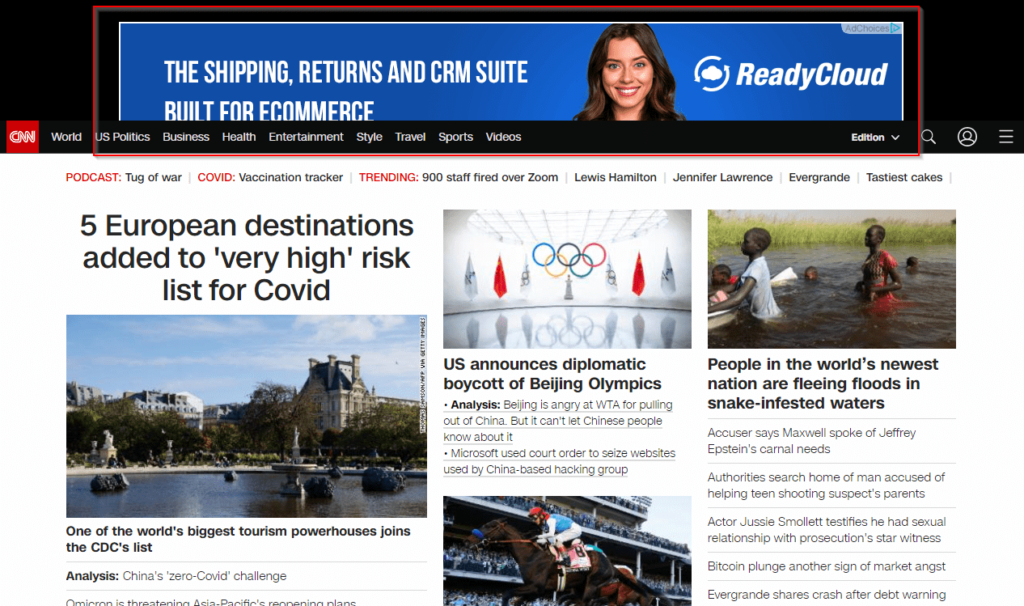
(I visited ReadyCloud to get statistics on retargeting, now I’m seeing their ad!)
To display their ads, third-party cookies are essential. What happens is that advertisers are using your first-party cookies with third-party cookies so they can retarget you even as you leave their website.
The interesting part is that support for third-party cookies were announced to be removed by Google by 2023. I won’t get into the alternatives here, but you can read this extremely useful blog post by Mateusz Rumiński on how retargeting will work without third party cookies.
When should you use a retargeting marketing campaign?
Simple—you use a retargeting campaign when you want your leads to come back to your website.
Whether it’s because they haven’t purchased anything yet, they abandoned their cart, or you have new products or bestsellers you think would catch their eye (and again, lead them back to your website), you should be retargeting your leads.
Platforms to use for retargeting
There are three major platforms that you can use to retarget your leads and bring them back to your website.
Google Display Network
Google Display Network has a massive reach, so using this platform would be essential in successfully retargeting your leads.
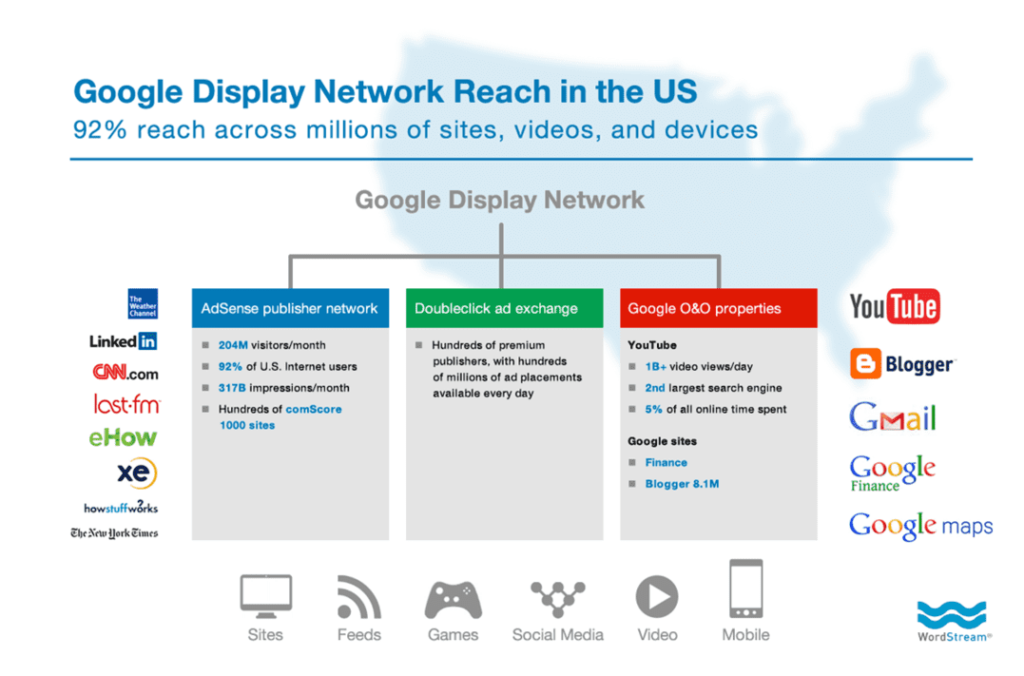
Image from WordStream
To use this platform for retargeting, what you need to do is to add a “pixel” or “tag” to your website for your visitors to get added to your retargeting audience through browser cookies.
Through the Google Display Network, you can show your past visitors ads as they visit the different Google partner sites. You can also create various lists for your leads so your retargeting campaigns will be more personalized and relevant.
Meta (Facebook)
We have all been followed by ads even on our social media accounts like Facebook and Instagram. That is because Facebook also allows retargeting campaigns on its platform.
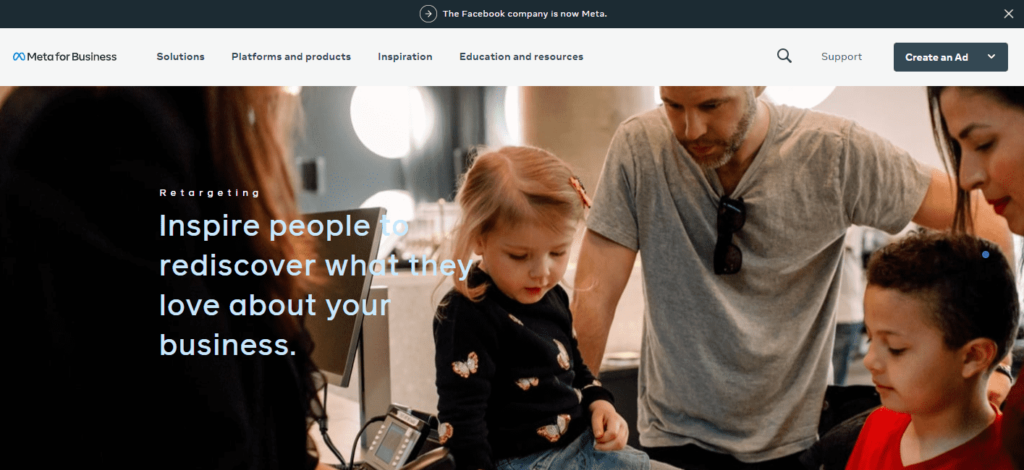
Same with Google, you just need to install a Facebook pixel that will enable you to track your visitors and their actions as they engage with your brand. You can also create lists for your leads so your campaigns can get more personal.
Last but not the least, you can use LinkedIn for your retargeting campaigns as well.
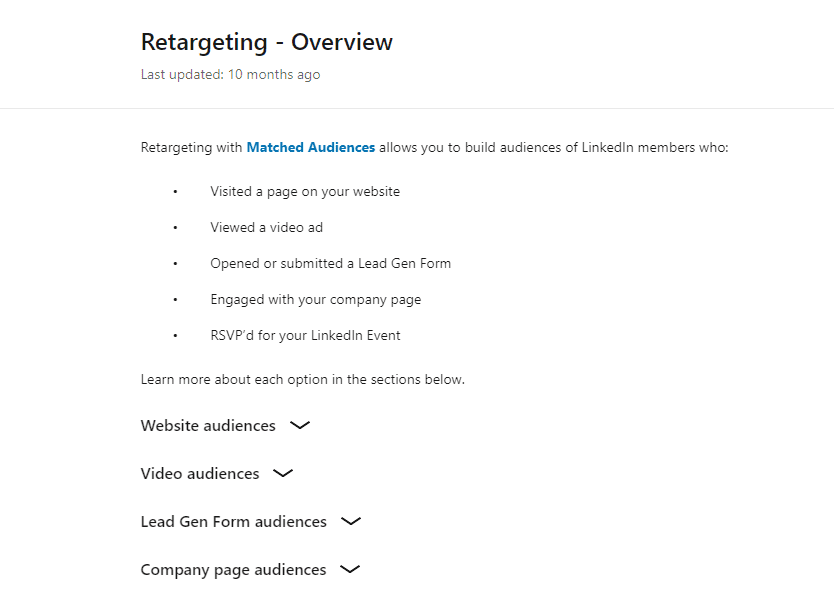
To use this platform, you need to install their LinkedIn Insight Tag to your website so you can retarget them using ads on LinkedIn. They also have demographic segments for more personalized retargeting marketing campaigns.
Effective retargeting strategies
Retargeting marketing, like any kind of marketing, also needs strategy to be effective. And as always, personalization is the name of the game.
Segment your audience
I cannot stress this enough. Audience segmentation is one of the main things you should be doing, whether it’s remarketing or retargeting. When you segment your audience, you are able to give them more relevant and personalized ads.
You can segment your audience by behavior, intent, or demographic. Then you can show them ads that are relevant to the lists you’re putting them in.
For example, you can show an ad to your past visitors who viewed your Christmas decorations but left before engaging anything. The ad you will be showing them will be different to those who added the decorations to their carts but left without purchasing, or those who are looking at non-Christmas-themed decorations instead.
Choose the right platform
The next question is, where is your target audience hanging out?
If your past visitors (whom you’ve segmented) prefer LinkedIn over Facebook, then it would not make much sense to invest on retargeting campaigns in Facebook. If they have no social media accounts, then Google Display Network would be the best platform for you to use.
This is why understanding your audience is a big deal. You don’t want to waste money creating retargeting campaigns that they won’t be seeing anyway.
Another reason is that although 30% of recipients of targeted ads react positively to being targeted, bombarding your audience with targeted ads can seem… creepy, that’s why there are calls to ban targeted ads. So make sure you don’t overstep your boundaries. Remember, you still want to give your customers a good experience with your brand, and the goal is to entice them to come back, not to scare them away.
Have easily recognizable and pleasing ads
Your retargeting marketing campaigns will be useless if your ads look generic. Make sure your leads know it’s you at first glance, and make sure they look good.
You can opt to A/B test your ads as well. A/B testing is when you change certain aspects of your ad or email such as copy, titles, or graphics to gauge what works well with your audience. By knowing what your audience prefers, you get to run better, more effective retargeting campaigns.
Use tools for retargeting marketing
You can also opt to use tools for your retargeting marketing campaigns. One such tool you can use is AnyTrack. As we’ve mentioned before, “AnyTrack is a conversion tracking platform that consolidates all of your conversion data from your website, whether it’s organic, paid, or direct, and sends it over to the marketing and analytics platform that you use. All of these using a single line of code only.”
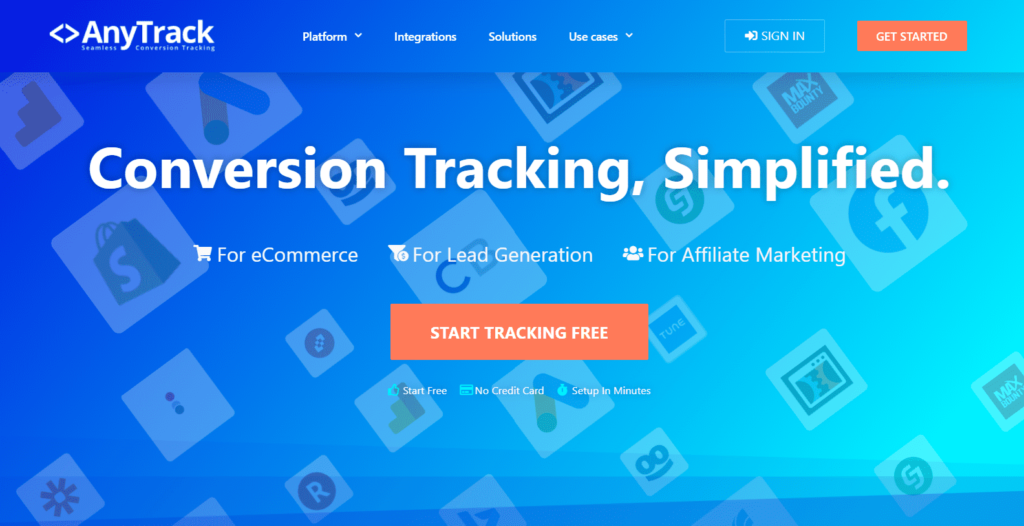
This means that whatever your visitors do on your website, you get to know about it and you can make retargeting campaigns based on their behavior. You can sign up using my referral link here.
Key takeaway
Letting your past visitors leave without engaging your site and converting is a huge mistake. Running retargeting marketing campaigns is one of the most effective ways you can bring them back to your site, so it’s integral to do it and to do it right. There are strategies, platforms, and tools you can use to successfully convert your past visitors, so make sure you learn them and utilize them.
Did this guide help you? Let me know by commenting below!
